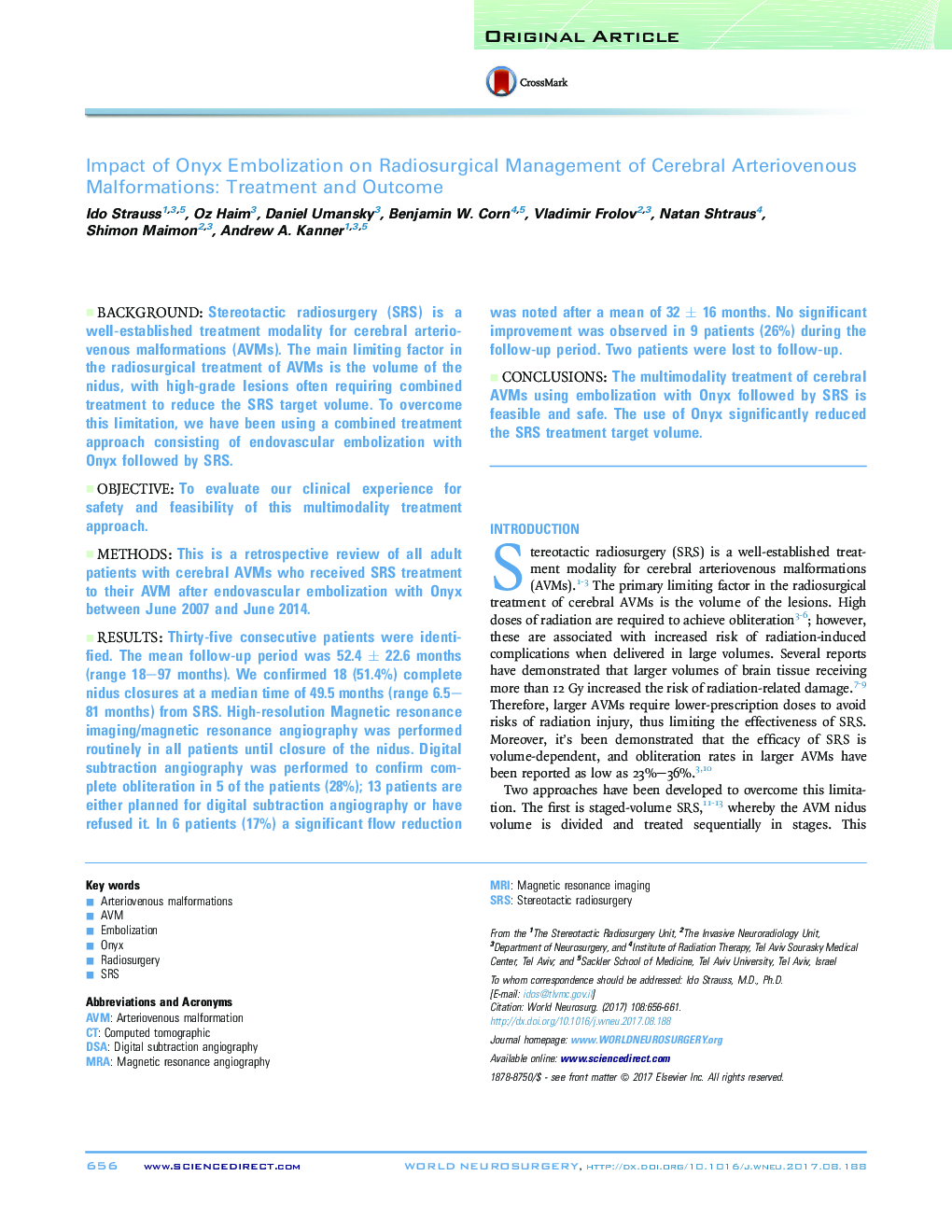| Article ID | Journal | Published Year | Pages | File Type |
|---|---|---|---|---|
| 5633816 | World Neurosurgery | 2017 | 6 Pages |
BackgroundStereotactic radiosurgery (SRS) is a well-established treatment modality for cerebral arteriovenous malformations (AVMs). The main limiting factor in the radiosurgical treatment of AVMs is the volume of the nidus, with high-grade lesions often requiring combined treatment to reduce the SRS target volume. To overcome this limitation, we have been using a combined treatment approach consisting of endovascular embolization with Onyx followed by SRS.ObjectiveTo evaluate our clinical experience for safety and feasibility of this multimodality treatment approach.MethodsThis is a retrospective review of all adult patients with cerebral AVMs who received SRS treatment to their AVM after endovascular embolization with Onyx between June 2007 and June 2014.ResultsThirty-five consecutive patients were identified. The mean follow-up period was 52.4 ± 22.6 months (range 18-97 months). We confirmed 18 (51.4%) complete nidus closures at a median time of 49.5 months (range 6.5-81 months) from SRS. High-resolution Magnetic resonance imaging/magnetic resonance angiography was performed routinely in all patients until closure of the nidus. Digital subtraction angiography was performed to confirm complete obliteration in 5 of the patients (28%); 13 patients are either planned for digital subtraction angiography or have refused it. In 6 patients (17%) a significant flow reduction was noted after a mean of 32 ± 16 months. No significant improvement was observed in 9 patients (26%) during the follow-up period. Two patients were lost to follow-up.ConclusionsThe multimodality treatment of cerebral AVMs using embolization with Onyx followed by SRS is feasible and safe. The use of Onyx significantly reduced the SRS treatment target volume.
